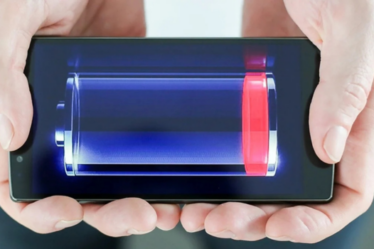In a market flooded with countless smartphone options, picking the right one can feel like an overwhelming task. Each brand promises top-notch features, making it difficult to determine what truly matters. If you’re in the market for a new smartphone, this guide will help you understand the essential factors, such as camera quality, battery life, and performance, so you can confidently find the perfect model for your needs.
1. Determine Your Budget
Your budget is the first aspect to consider when choosing a smartphone. While high-end models boast cutting-edge features, there are excellent mid-range and even budget options that offer solid performance. Define how much you’re willing to spend, as this will narrow down your options and help you avoid overspending. Remember, expensive doesn’t always mean better, especially if you don’t need the latest flagship features.
2. Choose the Right Operating System
The choice between iOS and Android is fundamental. Each operating system has its own ecosystem, apps, and features:
- iOS (Apple): Known for its smooth user experience, integration with other Apple devices, and regular updates, iOS is a favorite among those who value ease of use and security.
- Android: With a vast range of customization options, Android allows for more flexibility in terms of app downloads and home screen layouts. Android phones also offer a wider variety of models at different price points.
Consider which OS aligns with your preferences and the devices you already own. If you use a MacBook or iPad, for example, an iPhone might integrate seamlessly into your daily life. On the other hand, Android may be the better choice if you prefer customization and variety.
3. Camera Quality: More Than Just Megapixels
A good camera is a priority for many users, but don’t be swayed by megapixel counts alone. Camera quality depends on several factors, including:
- Aperture: A lower aperture (e.g., f/1.8) allows more light, leading to better low-light performance.
- Image Processing: Software plays a huge role. Phones like the Google Pixel series are renowned for their software-driven image enhancements.
- Multiple Lenses: Many smartphones come with multiple lenses (ultrawide, telephoto, macro) that provide a versatile photography experience.
If photography is essential for you, look up reviews and sample images to see how each model performs in real-life situations. Flagship models from Apple, Samsung, and Google generally lead in this department, but there are budget options that offer impressive cameras as well.
4. Battery Life: Go for Longevity
Battery life is crucial, especially if you rely on your phone throughout the day. When evaluating battery performance, check both the battery capacity (measured in mAh) and software optimizations that impact how efficiently the phone uses power. A few tips to keep in mind:
- Battery Capacity: A higher capacity (like 4,000mAh or more) generally offers longer usage.
- Processor Efficiency: Processors like the Snapdragon 8 Gen series or Apple’s A-series chips are designed for energy efficiency, improving battery life.
- Software Optimizations: Phones with more efficient software, like iOS or stock Android, tend to have better battery performance.
For heavy phone users, look for phones known for long-lasting battery life and avoid models with consistently poor reviews in this area.
5. Display Quality: Resolution and Refresh Rate
The display is a core part of the smartphone experience, affecting everything from gaming to video watching. Look out for:
- Resolution: A higher resolution (like 1080p or Quad HD) means sharper visuals, but also consumes more power.
- Refresh Rate: A higher refresh rate (such as 90Hz or 120Hz) makes the screen feel smoother, which is great for scrolling and gaming.
- Display Technology: OLED and AMOLED screens offer vibrant colors and deep blacks, which improve the visual experience compared to LCD screens.
If you enjoy media consumption, opt for a phone with a high-resolution OLED display and a high refresh rate for the best experience.
6. Processing Power and Storage: Keep It Future-Proof
Processing power and storage are essential for the phone’s performance and longevity. Look for:
- Processor: High-end processors like Apple’s A16 Bionic or Snapdragon 8 Gen 2 ensure smooth performance, even with demanding apps and games.
- RAM: For most users, 6GB to 8GB of RAM is sufficient, but if you’re into gaming or multitasking, consider models with 12GB or more.
- Storage: Choose a storage size that fits your needs. For instance, 128GB is often adequate, but if you store a lot of media or apps, 256GB or higher may be necessary.
If you want a phone that remains fast and reliable for years, don’t compromise on the processor or RAM, as these impact the phone’s ability to handle future apps and updates.
7. Additional Features: What Else Matters?
Consider other features that might enhance your experience:
- 5G Connectivity: If you live in an area with 5G networks, getting a 5G-capable phone can improve your data speeds.
- Water and Dust Resistance: IP ratings (such as IP68) indicate how well a phone can withstand water and dust, which can be useful for added durability.
- Biometric Security: Face ID, fingerprint sensors, and other biometric options add security and convenience.
Evaluate these features based on your lifestyle. For instance, if you work outdoors or near water, a phone with a good IP rating might be essential.
Conclusion: Making the Final Decision
Choosing the best smartphone requires a balance between your budget, preferences, and essential features. By focusing on aspects like camera quality, battery life, and display, you can make a well-informed decision that aligns with your needs. With these tips, you’re well-equipped to navigate the wide variety of options and pick a smartphone that fits your lifestyle perfectly.



